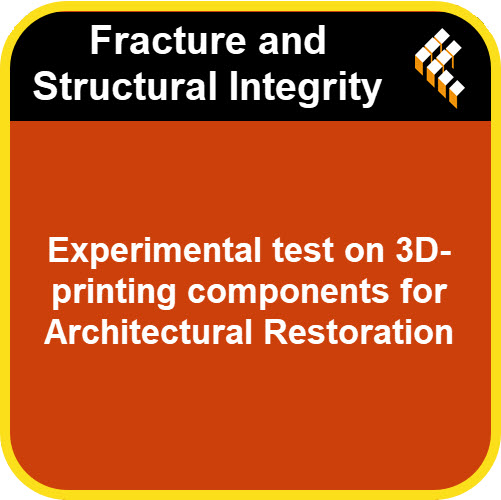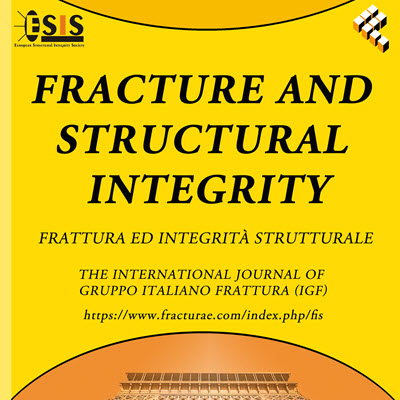Fracture and Structural Integrity: The Podcast
Stay at the cutting edge of fracture mechanics and structural integrity research with the official podcast of the Fracture and Structural Integrity journal. Join us for insightful interviews with top researchers, in-depth discussions of groundbreaking papers, and explorations of emerging trends in the field.
RSS Spotify YouTube Amazon Music
Experimental test on 3D-printing components for Architectural Restoration
2025-06-04
https://www.fracturae.com/index.php/fis/article/view/5414
The paper investigates the use of 3D-printed components made from Polylactic Acid (PLA) for the restoration of architectural and ornamental elements, focusing on architectural/structural components. The material PLA was chosen for its potentiality in respecting the principles of restoration, recognizability, reversibility and minimum intervention, thanks its visual appearance, very different from typical construction materials, biodegradability and affordability. The paper represents an exploratory study aimed to derive the characteristics of 3D-printed PLA components thought tensile tests on dog-bone samples, and to analyze the behavior of structural components, thought tensile and bending tests on small truss beam samples. Unlike previous works mainly oriented towards aesthetic reproduction, this study focuses on the mechanical performance of PLA components designed for structural integration in restoration projects. The results show that the 3D-printed PLA components exhibit an average tensile strength of 44 MPa and an average Young’s modulus of 1270 MPa, values consistent with literature for fully dense PLA prints, and peak loads of about 6.4 kN in tension and 5 kN in bending for truss elements. Furthermore, this study provides data useful for future numerical modelling of 3D-printed structural elements in PLA, aimed at predicting their structural performance and supporting the design phase.
DownloadFiletype: MP3 - Size: 19 MB - Duration: 16:21m (160 kbps 24000 Hz)
Powered by Podcast Generator, an open source podcast publishing solution | Theme based on Bootstrap
